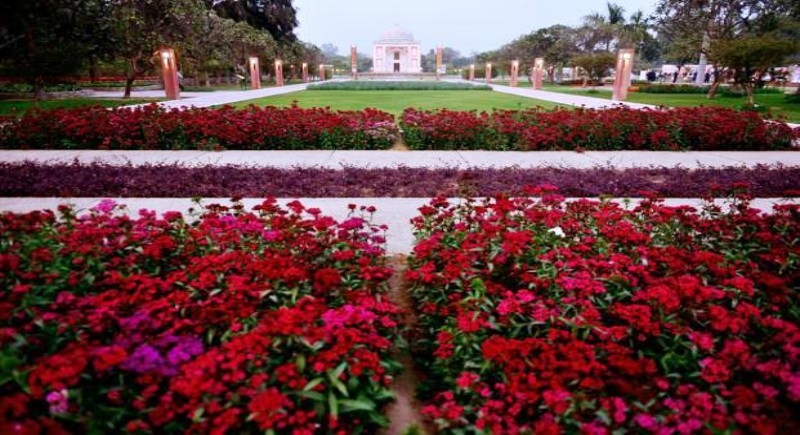Delhi’s Central Park attracts eyes with sprawling beauty and royal heritage monuments
New Delhi, February 22: Delhi has got its own taste of beauty to explore. Sidelining the political immobility and the criminal perspective, Delhi has sites to explore and attract many tourists. A new addition to the list of attraction is the new city park which has opened its wide doors for visitors from today.
 The 90 acre city park is located adjacent to the Humayun’s Tomb in Nizammuddin grounds which was previously housed as government nursery. This new park is cited as Delhi’s Manhattan Park as it roughly has the same size as the sprawling Lodhi Gardens.
The 90 acre city park is located adjacent to the Humayun’s Tomb in Nizammuddin grounds which was previously housed as government nursery. This new park is cited as Delhi’s Manhattan Park as it roughly has the same size as the sprawling Lodhi Gardens.The park, which is spread with several newly renovated world heritage monuments, houses Delhi’s first garden of trees, displays species native to the geography of the national capital, a bonsai house, and is home to 80 species of birds, and 36 butterfly species.
In 2007, the Aga Khan Trust for Culture had signed a MoU with the Central Public Works Department, Archaeological Survey of India and the South Delhi Municipal Corporation for a project to restore the site to its former glory. Back in the 16th century, a Mughal-style garden existed in the same location, which explains the historical buildings that dot the landscape. The Grand Trunk Road which connected the imperial capital to the rest of the realm ran right through the park.
While Delhi does reasonably well on overall green cover, much of it is concentrated in Lutyen’s Delhi and along a vertical spine in south Delhi. Most other Indian cities do even worse, especially when compared against global norms which mandate at least 20 square metres of open or green spaces per urban resident to ensure good quality of life.
Bengaluru has only 2 sq. m of open spaces per city resident, while Chennai has only 0.81 sq. m per capita, according to the urban development ministry’s urban greening report. In comparison, Delhi has 22 sq.m per capita of open spaces, while European cities have between 80 and 280 sq.m of green and open spaces per capita.
